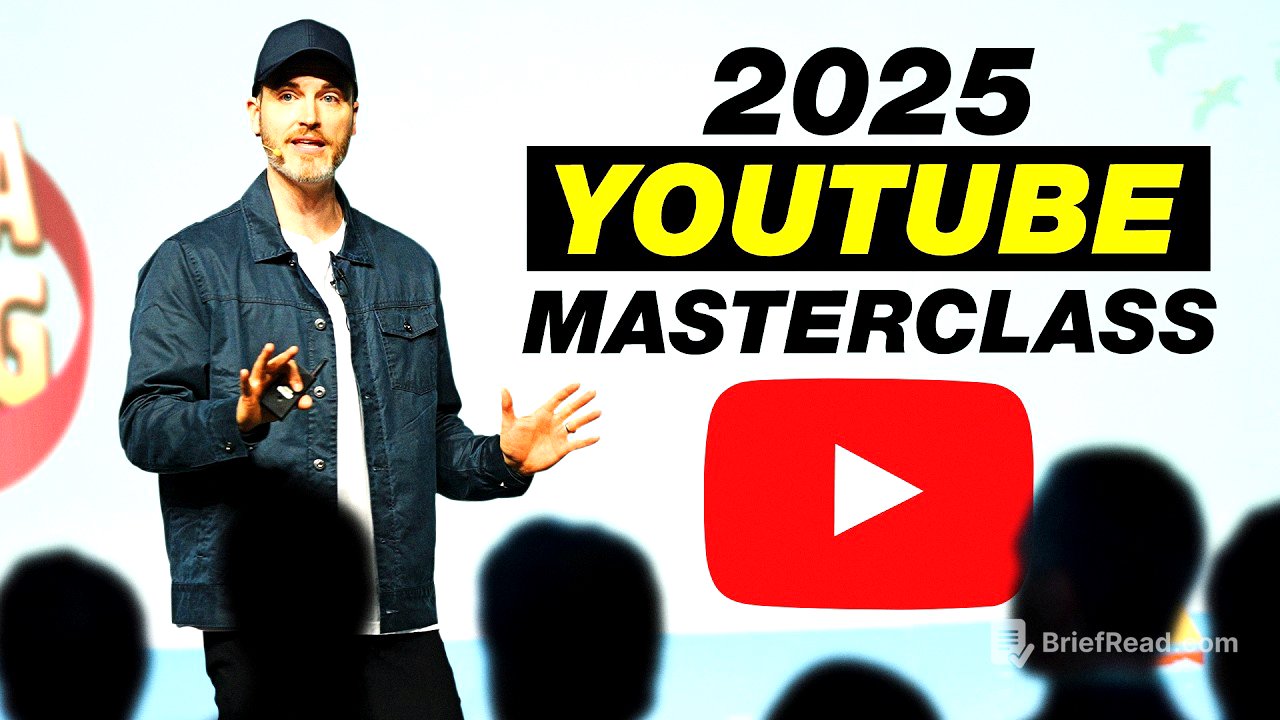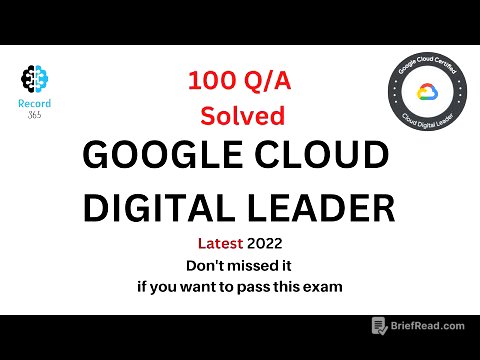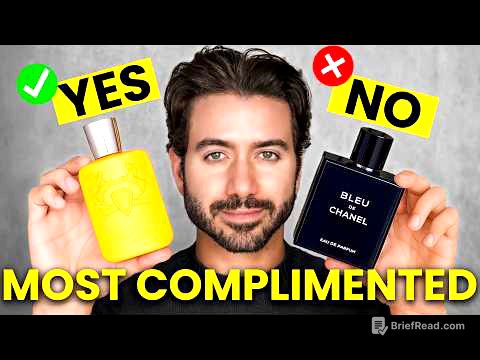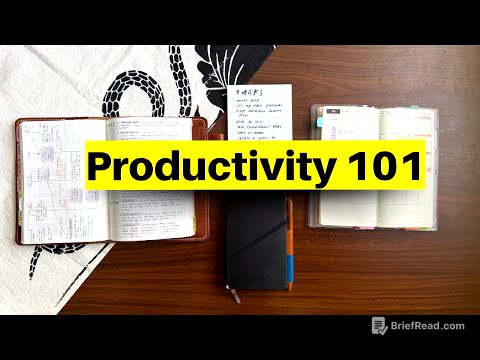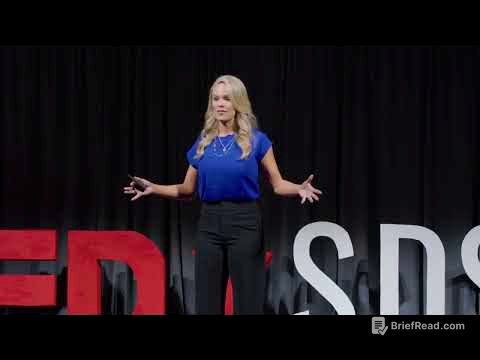TLDR;
This video outlines eight strategies used by top YouTube creators to trigger the algorithm and achieve virality. It emphasises the importance of mass appeal, reacting to trends, ethical clickbait, stirring emotions, culture surfing, crafting punchy titles, using specific numbers, and building a supportive peer network. The video encourages creators to experiment with these methods to increase views and broaden their reach while staying true to their niche.
- Mass Appeal Method
- Reaction Strategy
- Ethical Clickbait
- Stir Emotions and Spark Interest
- Ride Trends with Culture Surfing
- Craft Punchy Titles
- Use Odd and Specific Numbers
- Create or Join a Pure Network
How to Trigger the Algorithm and Go Viral [0:00]
The video introduces the concept of using specific strategies to achieve virality on YouTube, highlighting the story of Mary, who reached 1 million subscribers after starting her channel at 60. It sets the stage for discussing secrets used by top creators to trigger the algorithm and increase views, emphasising that these tips can be valuable for marketers, business owners, and content creators alike. The speaker also clarifies that the goal of virality should align with broader business objectives such as generating leads, sales, or building a community.
#1: The Mass Appeal Method [1:39]
The first strategy discussed is the Mass Appeal method, which addresses the problem of hyper-niched content having a low likelihood of going viral. The video uses Noah Kagan as an example, contrasting his niche video on hiring with his more popular, broad appeal videos featuring millionaires and billionaires. It highlights that while niche content is valuable, creators should aim to package their content or explore topics that resonate with a wider audience to achieve greater reach. The importance of transformation in thumbnails is also discussed, using the example of Lila Heros, and the video encourages creators to find the sweet spot between staying true to their niche and offering content with broad appeal.
#2: The Reaction Strategy [9:07]
The second strategy is the reaction strategy, which involves reacting to existing content to gain views. The video references Roger, a plumber who gained significant traction by reacting to plumbing scams. It explains that this strategy leverages other people's content (OPC) under fair use laws, provided the reaction transforms the original content. Examples include reacting to news clips, TikTok videos, or even bad Facebook ads. The video also highlights the importance of "viral for me" (VFM), encouraging creators to focus on achieving significant gains relative to their typical view counts rather than comparing themselves to mega-channels.
#3: Ethical Clickbait [13:01]
The third strategy focuses on ethical clickbait, distinguishing it from misleading or deceptive clickbait that hurts trust. Ethical clickbait is defined as engaging, compelling, honest, accurate, and over-delivering. The video uses "The Diary of a CEO" podcast as an example, noting their extensive thumbnail testing to optimise click-through rates. It emphasises the importance of understanding psychology and human behaviour to craft titles and thumbnails that trigger curiosity, emotional responses, and confirmation bias in an ethical manner. The video also touches on the power of opening curiosity loops and using challenges to create compelling content.
#4: Stir Emotions and Spark Interest [20:06]
The fourth strategy involves stirring emotions and sparking interest in the audience. The video references David Ogilvy's emphasis on emotional appeal in advertising, noting that people are more likely to be persuaded by emotions than logic. It uses an interview with Patri B David as an example, where the title "Changes Are Coming for Content Creators" was chosen to tap into the human brain's wiring for novelty and the fear of missing out. The video also highlights the importance of loss aversion, noting that people are more motivated by the fear of losing something than the prospect of gaining something. It encourages creators to consider what emotion they want their content to trigger and references Robert Plutchik's wheel of emotions as a tool for planning content.
YouTube Secrets [20:44]
This section is an advertisement for the book "YouTube Secrets" and related resources.
#4: Stir Emotions and Spark Interest (Continued) [22:48]
This section continues the discussion on stirring emotions and sparking interest, emphasising the importance of novelty and change in capturing audience attention. It uses the example of toothpaste brands always advertising as "new and improved" to illustrate how even minor changes can trigger interest. The video also references Tom Bilyeu's podcast, Impact Theory, as an example of how frequently using the word "change" in titles can attract viewers. It encourages creators to consider what emotions they want their brand to represent and to tap into curiosity, fear of missing out, and other psychological triggers.
#5: Ride Trends with Culture Surfing [33:03]
The fifth strategy is riding trends with culture surfing, which involves tapping into music, media, logos, and brands that make up the current culture. The video uses the "Changes Are Coming for Content Creators" thumbnail as an example, noting the inclusion of social media platform logos to attract attention. It distinguishes between influence surfing (using known people) and trend surfing (using current events or times of year). The video also highlights the concept of borrowed authority, where creators can elevate their own authority by associating with well-known figures or brands.
#6: Craft Punchy Titles [39:28]
The sixth strategy focuses on crafting punchy titles, advocating for brevity and simplicity. The video references the book "Smart Brevity" and highlights a trend in Think Media's most viewed videos, which often have titles of seven words or less. Examples include "How to Get Free Stuff on Amazon" and "Best Cheap Smartphone Accessories for Video." The video also references Ryan Trahan, a popular creator known for simple, easy-to-understand ideas, and encourages creators to create an open loop of curiosity with their titles.
#7: Use Odd and Specific Numbers [41:33]
The seventh strategy involves using odd and specific numbers in titles to increase interest and perceived authenticity. The video uses the example of "From Zero to 1,000 Subscribers in Just 9 Days" and "How I Get 100 Subscribers Every Single Day." It explains that specific numbers seem more honest and can make titles more compelling. The video also references Noah Kagan's title, "How I Turned 20,000 into 4.5 Million," and Ali Abdaal's video, "Nine Passive Income Ideas and How I Make 27k Per Week With It," as examples of this strategy in action.
#8: Create or Join a Pure Network [43:33]
The eighth and final strategy is to create or join a peer network of like-minded YouTube and marketing enthusiasts. The video references MrBeast's experience of forming a mastermind group with other small YouTubers, which he credits with accelerating his growth. It emphasises that learning from other people's mistakes can be five times faster than learning from one's own. The video encourages viewers to brainstorm multiple titles for their videos and to seek feedback from their community to choose the strongest one. The video concludes by recapping the eight strategies and offering viewers access to the slides and a perfect video recipe PDF.
